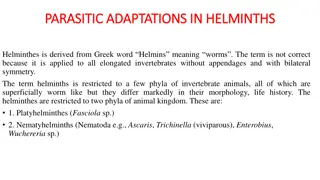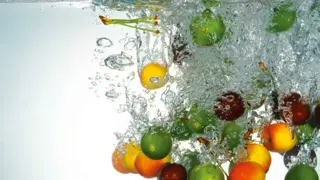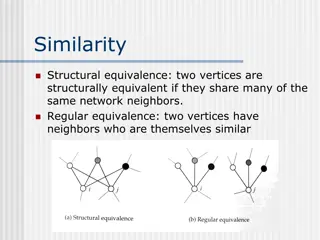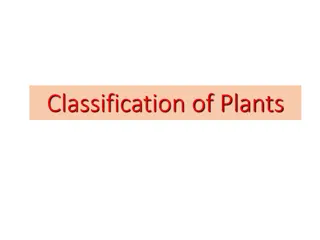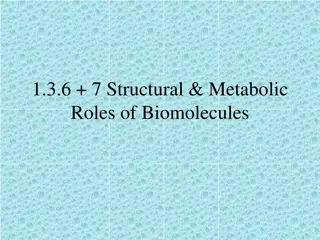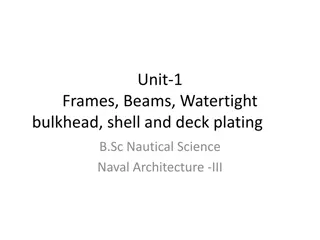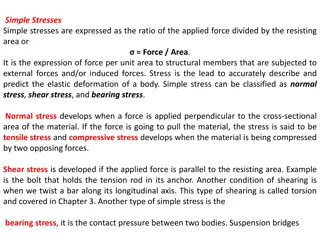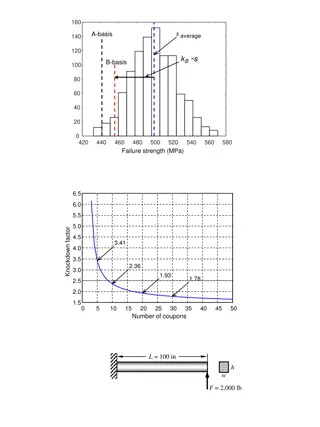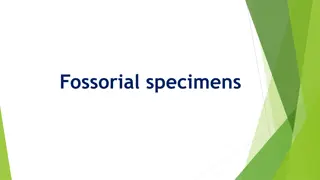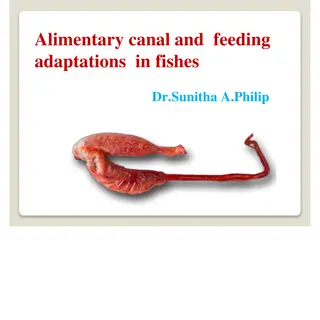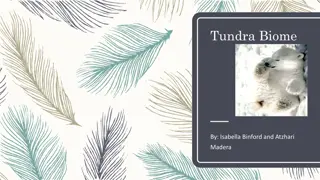Understanding the Structural Adaptations of Ferns and Tracheophytes
Ferns, as vascular plants, possess unique structural adaptations such as vascular tissues, tracheid cells, true roots, and leaves that enable them to thrive on land without depending on extremely wet environments. The intricate development of tracheophytes has shaped ferns' ability to transport water, nutrients, and photosynthetic products efficiently. By comprehending these structures, we gain insights into how ferns have evolved and survived in various ecosystems.
Download Presentation

Please find below an Image/Link to download the presentation.
The content on the website is provided AS IS for your information and personal use only. It may not be sold, licensed, or shared on other websites without obtaining consent from the author. Download presentation by click this link. If you encounter any issues during the download, it is possible that the publisher has removed the file from their server.
E N D
Presentation Transcript
Fern Structure and Functions Ferns are plants that possess vascular tissues, strong roots, creeping underground stems called rhizomes and large leaves called fronds.
Ferns-Tracheophytes Ferns are very developed members of the phyla Tracheophyta. To understand the structure of ferns specifically you have to understand the structural developments of the phyla Tracheophyta that enables ferns to succeed on land and not depend on extremely wet environments to survive
Vascular tissues A very important adaptations of tracheophytes are vascular tissues vascular tissues are complex tissues that transport water and the nutrients that are a product of photosynthesis throughout the plant There are two types of vascular tissues Xylem- transportes water from the roots to all parts of the plant Phloem- transports nutrients and products of photosynthesis from the fronds throughout the plant
Trachied cells An important type of cell present in vascular tissues are tracheid cells. These cells allow xylem tissues to carry water from the roots to the leaves and are essential in the function of xylem tissues. Tracheid cells have very thick strong cell walls that strengthen the stems of the fern and help it stand up against gravity. Tracheid cells are essential in the survival and function of ferns
True roots and true leaves Vascular tissues have aloud ferns to develop true leaves and true roots. True roots like the ones in ferns have a bundle of vascular tissues gathered in the central area of the root. This is called a vascular cylinder. These true roots allow ferns to efficiently obtain and disperse water to all areas of the plant enabling its survival in land The true leaves are photosynthetic organs that have bundles of vascular tissues gathered in the vein of the leaf/frond The leaves of tracheophytes including ferns usually have a waxy coating called a cuticle. This coating protects the frond/leaf from excessive evaporation from the sun and keeps water inside the plant. Helping it thrive in dryer environments
Now that we fully understand the structures of tracheophytes and how these developed structures have benefited and shaped ferns and there survival on land we can look into the structures specific to Ferns
Ferns posses three main structures; Fronds, Rhizoids, and Sporangium Fronds- fronds are the essentially the leaf of the fern. They are long compound leaves with many divisions. The fronds function are responsible for photosynthesis, they produce the nutrients from the sun that are transported throughout the fern. Fronds are also have a reproductive function. Rhizomes are essentially the stem of the fern plant. The rhizomes may creep along or be completely underground. New fronds grow from the Rhizomes and on the other end the Roots are also connected to them. These structures contain xylem and phloem tissues assisting in transporting water, minerals and nutrients throughout the plant Sporangium- the sporangium are reproductive structures on a fern plant that are visible on the underside of the fronds. Each sporangium is a structure containing many haploid spores. This structures are essential in the reproductive proses of ferns which we will look into in detail later.


